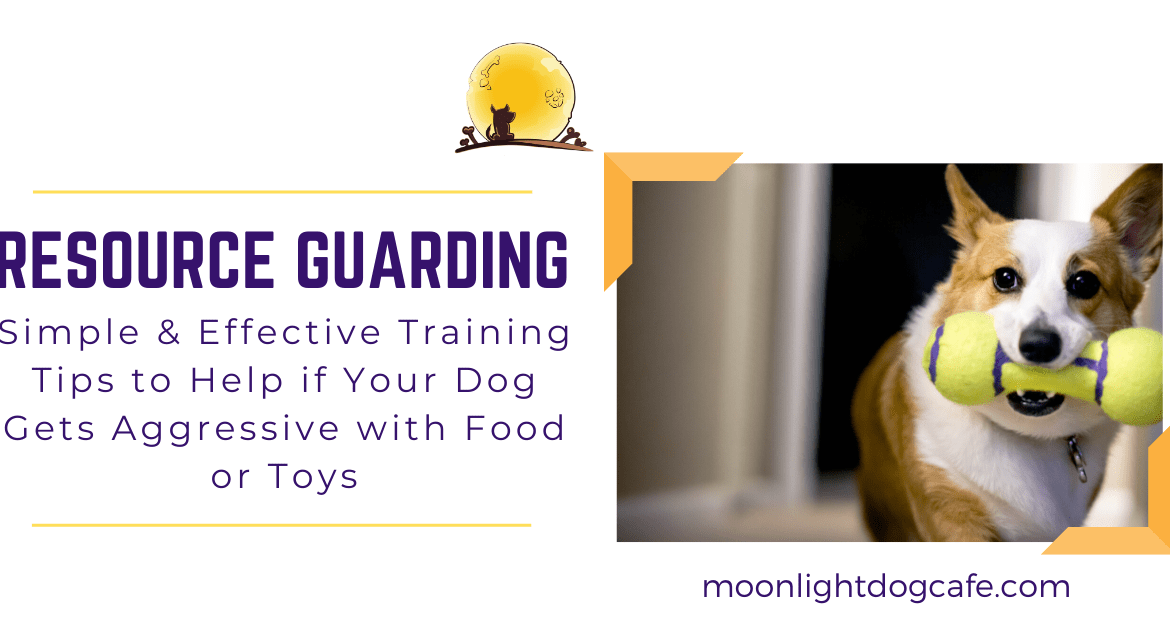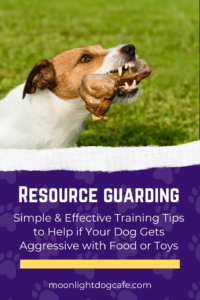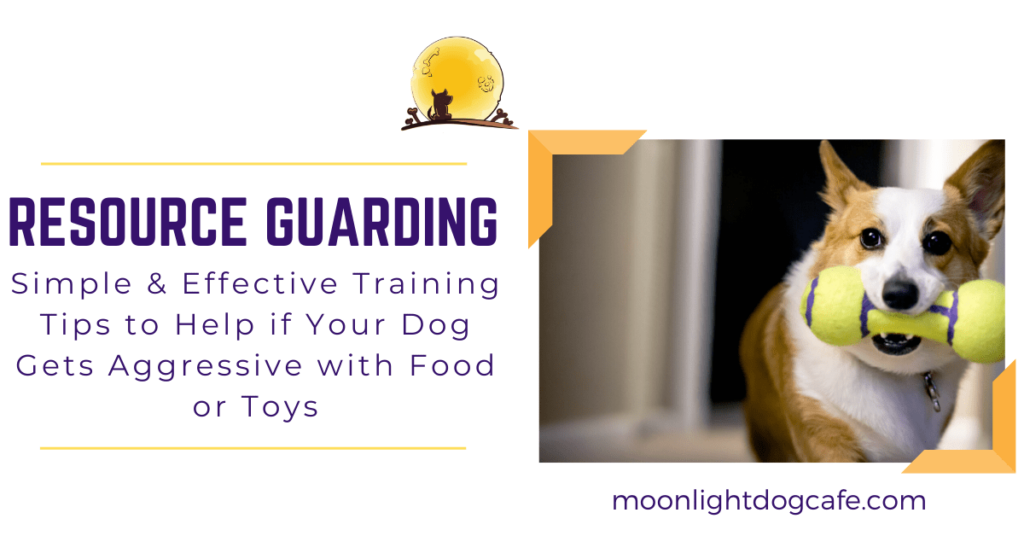
Resource Guarding in Dogs: How to Prevent Your Dog from Getting Aggressive Over Food & Toys
Effective Strategies to Prevent Resource Guarding in Dogs: Training Tips for Food and Toy Aggression
We’ve run into a few instances of resource guarding in the store. A dog picks up a toy or treat, another dog approaches and it degenerates into a growling mess.
Resource guarding is a natural instinct for dogs and most animals. As humans, we practice resource guarding. We don’t like it when people walk into our house and claim it for themselves.
What is Resource Guarding in Dogs?

Resource guarding is a behavior where dogs exhibit protective actions over items they consider valuable, such as food, toys, or even specific people. This can manifest as growling, snapping, or biting when someone approaches the guarded item. Understanding that this behavior stems from a dog’s instinctual drive to secure resources is crucial for effective intervention.
In the dog world, you’ve probably come across a dog acting aggressively in parks when it is guarding a ball or a human with treats. At home, this may happen when feeding a dog and it means immediate danger to all humans or dogs in the house.
- Let’s take a typical scenario. A dog is chewing a bone and you approach. The dog indicates through growling or some other signaling behaviour that the interrupter (other dog/ human) should back off.
- The best scenarios would be if the dog chewing the resource deescalates by either ignoring the interruption. Or by dropping the resource for the interrupter to pick up.
- Alternatively, the interrupter could also calmly walk away and then there is no confrontation.
- When the interrupter keeps barging in despite the warnings, it can result in an aggressive dog confrontation. In this case the interrupter is acting inappropriately. In other cases, the dog guarding the resource could be guilty of aggression. This happens if it escalates without giving any signaling indication (hair raised, growling etc) or waiting for an appropriate response from the interrupter.
Resource Guarding in Dogs: Training Tips for Food and Toy Aggression
Depending on the situation and the severity of resource guarding, we find there are 2 approaches. Note that we are not certified dog trainers but have to make quick decisions to ensure dogs and humans are not hurt.

- The first thing is to identify who is being inappropriate. If your dog is a resource guarder or aggressive towards other dogs when there is food or toys and is being inappropriate, you need to either manage the situation by ensuring the trigger (toy, ball, stick) is not around during a play session.
Provide Separate Resources: Ensure each dog has its own food bowl, toys, and resting areas to minimize competition and guarding behavior.
Supervise and Intervene Early: Monitor interactions and redirect any signs of guarding before they escalate. Teaching commands like “leave it” can be beneficial in these situations.
- The second approach is called Desensitization and Counterconditioning. Desensitization and Counterconditioning is about gradually exposing your dog to situations that trigger guarding behavior while pairing the experience with positive outcomes. Regardless of whether it is the resource guarder’s fault, this approach is to modify the behaviour by trading something of perceived higher value than the resource your dog is guarding.
- You could use your dog’s favourite treat (e.g. tripe seems to work very well although it smells awful) to trade.
- Avoid Punishment: Never take away the resource that your dog is guarding without a perceived better exchange or it may reinforce the tendency to guard. If you take something away from me without ever giving me something better, i will prevent you from taking it away in the future.
- Start at home by trading higher-valued items with things your dog is less likely to guard.
- Gradually work towards things they are more likely to guard, all the time ensuring that your dog does not get to ‘aggression.’
- Teach the ‘Drop It’ Command: You could use words like “Drop it” as your cue word for trading and over time modify the environment to include another dog etc with the aim of showing that sharing is awesome.
What If The Dog Interrupting is at Fault for Causing the Other Dog’s Aggression
Although our focus has been on the resource guarder, what if your dog is the interrupter and behaving inappropriately? Punishing your dog by pinning it down as we have sometimes seen may just lead to confusion or the dog shutting down and not exhibiting regular cues of discomfort.
We’d still recommend owners to train their dogs to “Leave it” as a cue to get your dog to focus on you interrupting the instance they may behave inappropriately.
Early Socialization: Expose puppies to various situations involving sharing and handling to build positive associations and reduce the likelihood of guarding behaviors developing.
Consistent Training: Implement and maintain consistent rules and boundaries to provide structure and reduce anxiety-related behaviors.
For our dog trainer friends or dog owners who’ve dealt with these situations, how would you train these situations?
Please comment to let us know what you think about this dog training guide? Is there something you would have liked us to include in this guide? Let us know by leaving a comment below.
Follow us on facebook for more dog and cat health and training tips. Visit our website at www.moonlightpetstore.com for online shopping


